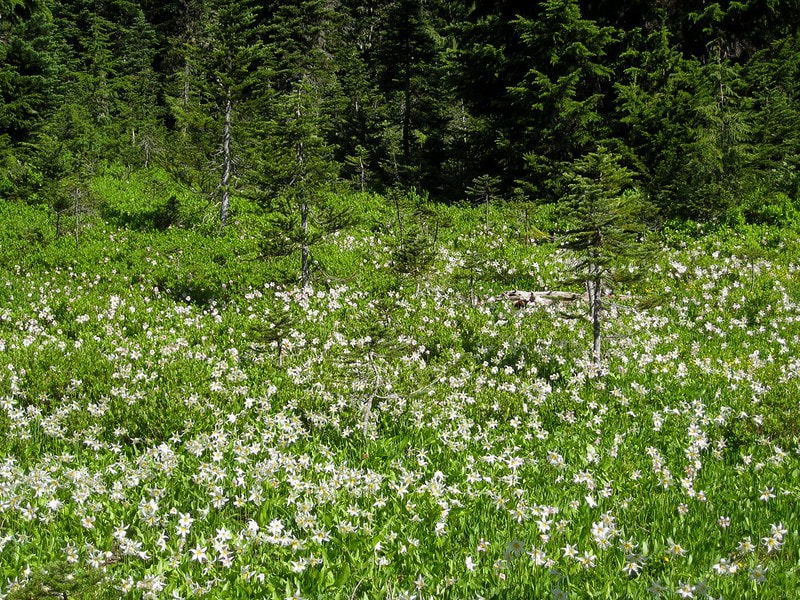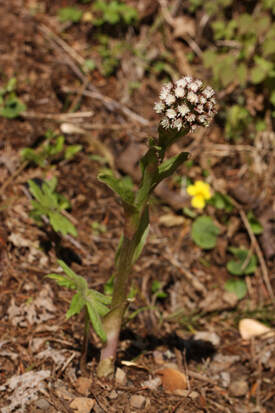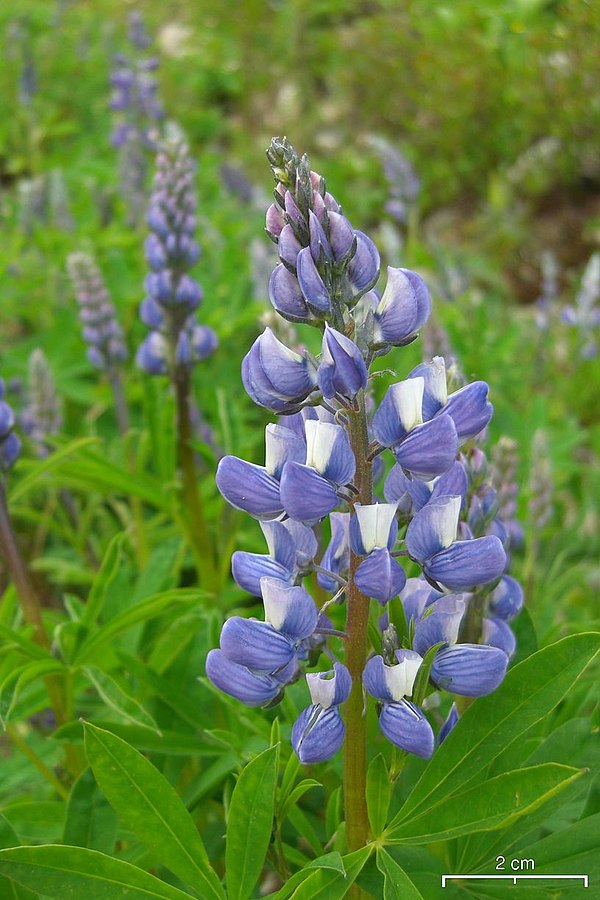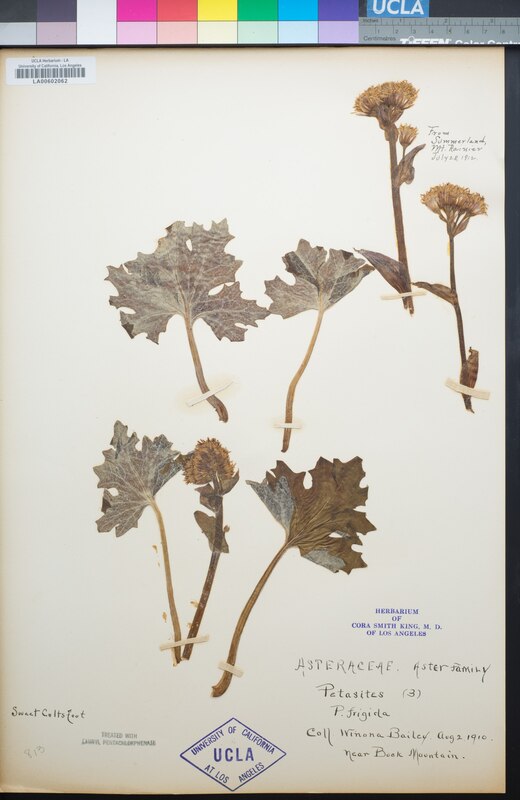| In their "Report of the Botanists", Eaton and Bailey describe, with no absence of awe, the lush alpine lands they explored as part of the 1910 expedition to Mt. Rainier. They write of "great slopes of the avalanche lily (Erythronium montaum)" (20), "streams...lined with the great gorgeous crimson monkey flower (Mimulus lewisii)" (20), and "forests of yellow or bull pine (Pinus ponderosa)," whose "tall trunks with mottled orange brown bark and not a branch for twenty or thirty feet gave a color to the landscape that harmonized with the bright skies of Eastern Washington" (23). |  "great slopes of the avalanche lily (Erythronium montaum)", Photo credit: brewbooks |

Title: Petasites frigidus 2144.JPG CC-BY-SA

PC: Jason Hollinger CC-BY 2.0
- Cora Smith Eaton. Wikipedia. https://en.wikipedia.org/wiki/Cora_Smith_Eaton
- The Mountaineer. 1910. Vol. III. https://www.mountaineers.org/about/history/the-mountaineer-annuals/indexes-annuals-maps/the-mountaineer-1910
- The Mountaineer. 1912. Vol. V. https://www.mountaineers.org/about/history/the-mountaineer-annuals/indexes-annuals-maps/the-mountaineer-1912
- University of Washington Museum of History and Industry. https://digitalcollections.lib.washington.edu/digital/collection/imlsmohai/id/9292

